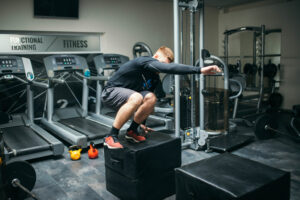Jumping higher is not just a skill for athletes. It’s a physical ability that can benefit anyone, from children playing games to adults looking to improve their fitness level. Whether you’re a basketball player trying to dunk, a volleyball player aiming for a powerful spike, or a fitness enthusiast looking to add more power to your plyometric workouts, increasing your vertical jump can be a game-changer. This article provides a comprehensive roadmap to enhance your jumping height, concentrating on specific exercises, techniques, and lifestyle modifications that can assist you in reaching your objective.
Understanding the Mechanics of Jumping
Before we delve into the exercises and techniques, it’s important to understand the mechanics of jumping. A high jump is a result of the combined effort of your lower body muscles, including your glutes, quadriceps, hamstrings, and calves. Your core muscles also play a significant role in maintaining balance and generating power during the jump.
Exercises to Jump Higher
1. Squats
Squats are a fundamental exercise for building lower body strength. They target your quadriceps, glutes, and hamstrings, which are crucial for jumping higher. To perform squats:
- Stand with your feet shoulder-width apart.
- Flex your knees and descend your body as though you’re about to sit on an imaginary chair.
- Ensure your back remains upright and your chest is lifted throughout the movement.
- Push back up to the starting position.
2. Jump Squats
Jump squats add a plyometric element to the traditional squat, helping to increase your explosive power. To perform jump squats:
- Start in a squat position.
- Jump as high as you can, exploding upwards.
- Land softly, immediately lowering into the next squat.
3. Box Jumps
Box jumps are another plyometric exercise that can help improve your vertical jump. They target the same muscle groups as squats but add an element of power and coordination. To perform box jumps:
- Stand in front of a sturdy box or platform.
- Lower into a squat, then explode upwards, jumping onto the box.
- Step back down and repeat.
Techniques to Jump Higher
1. The Approach
The approach is the run-up before the jump. It helps to generate momentum and sets the stage for a high jump. A good approach is typically three to five steps, ending with a strong penultimate step to launch into the jump.
2. The Takeoff
The takeoff is the moment you transition from running to jumping. It’s crucial to use your arms to generate upward momentum. Swing your arms up as you jump, and use your core to maintain balance.
3. The Flight
During the flight, your body should be in a straight line. Keep your core engaged and your body tight to maintain control.
4. The Landing
The landing is just as important as the jump. Aim to land softly and absorb the impact with your knees slightly bent. This helps to prevent injury and prepares you for the next jump.
Lifestyle Changes to Jump Higher
1. Maintain a Healthy Diet
Proper nutrition is crucial for muscle growth and recovery. Ensure your diet is rich in protein, complex carbohydrates, and healthy fats.
2. Stay Hydrated
Proper hydration plays a crucial role in muscle function and recuperation. It’s important to consume an adequate amount of water before, during, and after your exercise routines to ensure your muscles are well-hydrated and can recover effectively.
3. Get Enough Sleep
Quality sleep is vital for muscle recovery and growth. It’s during sleep that your body repairs and rebuilds muscle tissues. Strive to get 7-9 hours of quality sleep each night to ensure your body has ample time to recover and prepare for your next workout.
4. Consistency is Key
Improving your vertical jump is not a one-time effort. It requires consistent training and dedication. Stick to your workout routine, and you’ll see improvements over time.
In conclusion, jumping higher is a skill that can be developed with the right exercises, techniques, and lifestyle changes. It’s not just about natural ability; it’s about dedication, hard work, and consistency. So, start incorporating these tips into your routine, and watch your vertical leap reach new heights!











